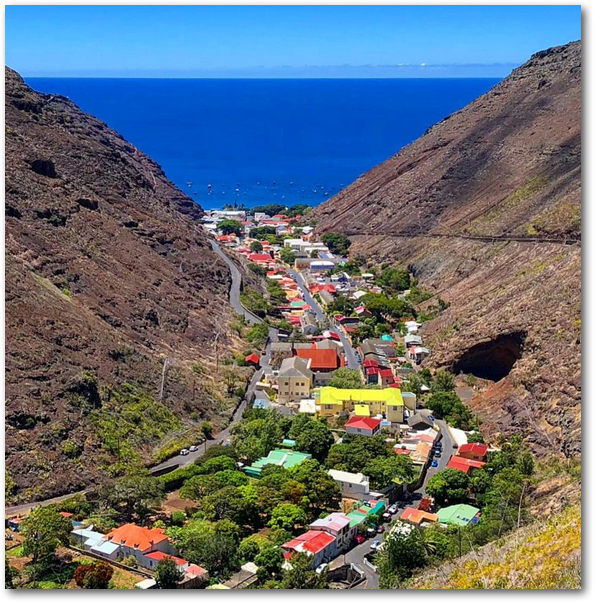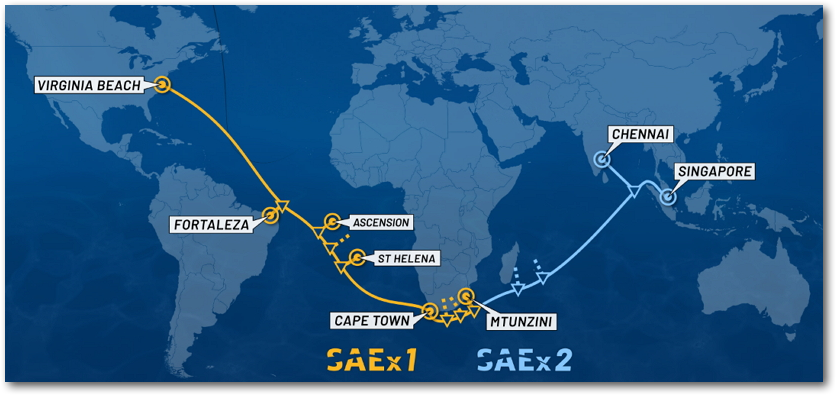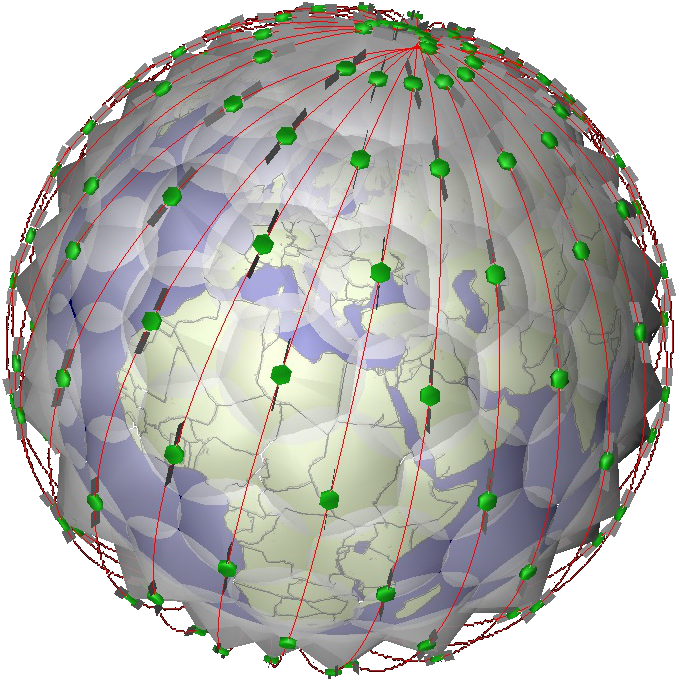13th June 2019 update
Of course, not all cable projects succeed. The South Atlantic Express (SAex), would be one of the first direct links between Africa and South America, and connect remote islands like St. Helena along the way. But SAex has struggled with funding and currently sits in limbo. Cinia and MegaFon hope to avoid a similar fate.
Source: IEEE Spectrum
15th May 2019 update
Are We (St Helena) Getting a Fibre-Optic Cable or Not – The Latest….(14-05-19)
It has been 15 months since Dr. Rosalind Thomas of the SAEX submarine cable project visited St Helena and promised the cable to become operational in mid 2020. Since then it has become alarmingly quiet around the cable‘s progress. Although the European Union has provided £18 million for the 50km branch to St Helena the funding of the trunk cable between South Africa and Brazil is still in murky waters and as the required seabed survey has still not happened the commissioning date has already slipped at least by a year to 2021 if it materializes at all.
It has always been clear that St Helena cannot afford a dedicated cable to Africa or Latin America as the cost of such would run into the hundreds of millions. The only way to land a fibre optic cable on St Helena would be when another cable runs close to the island from where a short branch to the island could be forked off. Unfortunately the only other cable project to come close to the island, Seaborn Networks‘ SABR cable (South Africa-Brazil) has not made any progress either, leaving us in desperation. However, with both the SAEX and SABR proposed cable projects finding it difficult to turn ideas into reality, two other proposals for South Atlantic cable routes are emerging.
Last week the Wall Street Journal revealed that two of the world‘s largest Internet companies known for their multi-billion investments in submarine cables, Facebook and Google, are both working on two separate cable systems around the African continent. Facebook‘s “Simba”cable would encircle the African continent while Google‘s “Equiano” cable would be laid off Africa‘s western coast. Large telecom companies like MTN Group and Vodafone are believed to be partners in these cable projects that will connect European and Asian data centres to the growing African telecom markets where more and more people use Facebook‘s and Google‘s services.
This is a long posting so for the full story visit the ConnectStHelena website.
In February 2019, I spent an enjoyable and informative couple of days attending the Submarine Networks EMEA conference in London updating myself on what’s happening in the submarine cable world -particurlarly in the South America region.
For as long as I can remember there has been an interest in the Falklands Islands about whether there was a possibility of connecting the islands to the rest of the world using a submarine cable rather that suffering the constrained bandwidth and long delays of the geostationary satellite currently used. However, there is also a pragmatic acceptance in the populace that this was not possible though the reasons have never been fully explained in a public forum as far as I am aware.
 Jamestown, St Helena (Photo: Lee Abbomont Travel)
Jamestown, St Helena (Photo: Lee Abbomont Travel)
Until 2011, this was a similar view held by inhabitants of St Helena but that is now all about to change and it shows what can be achieved by community pressure supported by the St Helena Government.
Today St Helena residents and businesses are connected to the rest of the world using a geo-stationary Intelsat satellite link. This methodology is exactly the same as used in other South Atlantic islands including the Ascension Island and Falkland Islands. Indeed, all three islands use the same organisation for all their external telecommunication needs. The use of a traditional geostationary satellite is costly leading to a low-level of satellite capacity that is unable to support the quality of Internet seen in all terrestrially connected countries and islands.
There was little, if no, possibility of connecting St Helena with a submarine cable with only a population of just over 4000 until the announcement of the trans-Atlantic ‘South Atlantic Express’ (SAEx1) submarine cable in 2011. SAEx1is a capable of carrying 108Tbit/s of data connecting Cape Town in South Africa Virginia Beach in the USA. (Note: A speed of 108Terabit/s is equivalent to 108,000Gigabit/s or 108,000,000Mega bit/s.)
 The SAEx1 submarine Cable
The SAEx1 submarine Cable
(Source: https://www.submarinenetworks.com/en/systems/brazil-africa/saex )
The project was announced in 2011 and by 2014 a number of parties had expressed interest in its finance. Back then its total cost was estimated to be £160m – not an insignificant amount (However, submarine cable build costs are plummeting year-on-year so it will cost considerably less in 2020). Though it was planned to pass nearby St Helena there was no vision to land it on the island leaving St Helena to carry on suffering a low-capacity satellite link for all its external communications.
It took the creativity of one individual, Christian von der Ropp, to realise that an opportunity that must not be missed was now possible with the building of the SAEx submarine cable. Talking with Christian a while back and at the submarine confererance, he said that a friend of his visited St Helena and was appalled at the slow speed of the Internet encountered. Christian thought about this for a while and in 2012 came up with the idea to create a campaign called “Move This Cable” launched by A Human Right. A very active web site ensued to lobby landing the cable on St Helena.This project was fully supported by the St Helena Government taking a visionary view of the importance of the project to the islands.
In 2012 eFive Telecoms (Pty) Ltd announced that they would reroute the SAEx cable to pass-by St Helena allowing a short ‘branch’ to St Helena to built after a successful and coordinated lobbying campaign. The cable is expected to go live in 2020 after two earlier delays in 2014 and 2017. A branch to Ascension island would also be built.
On 27th October 2017, the St Helena Government announced that it had signed a Memorandum of Understanding (MoU) for a branch from the SAEx cable to the island to be ready in early 2020.
It’s also most interesting to see that SHG also announced the negotiation of a 21M Euro grant/loan from the European Development Fund (EDF) with the aid of the UK Government’s Department for International Development (DFID). These discussions were led by Paul McGinnety (Who has now left the island I understand), Assistant Chief Secretary at St Helena Government and Dax Richards, Financial Secretary at St Helena Government.
“SHG is pleased to announce that it has recently received confirmation from the European Commission that St Helena’s bid for funding from the 11th European Development Fund (EDF11) through a Budget Support Programme has passed the 2nd quality support group (QSG 2). This essentially has given the go ahead for St Helena’s programme amounting to €21.5 million to be formally submitted to the Commissioners for approval. This funding is intended to support the delivery of the Digital Strategy through the realisation of a Submarine Cable to the Island with some funding earmarked for both Ascension and Tristan da Cunha”.
In October 2018, SAEx announced that the SAEx link from Fortaleza to Virginia Beach would now use Sparkle’s (International Services arm of Telecom Italia Group,) existing fibre pairs in their Seabras-1 cable system. This partnership should significantly reduce the build cost and time of SAEx1. Interestingly, Microsoft has been on board as the foundational customer for Seabras-1 from the beginning and fully participates in the Seabras-1 cable system. Alcatel Submarine Networks (ASN) has been chosen as the contractor to build SAEx. ASN will deliver the full project, end-to-end, including network design, manufacturing, installation and commissioning.

The SAEx1 submarine Cable
(Source: https://www.submarinenetworks.com/en/systems/brazil-africa/saex/saex-cooperates-with-sparkle-to-connect-south-africa-to-usa )
The SAEx cable should provide 200Gbit/s (200,000Mbit/s) backhaul capacity to the island of St Helena from 2020. But, even with the grant negotiated there will be a very high cost for maintenance of the SAEx branch to St Helena. For example, the most expensive possible cost that could be encountered is if the branch breaks possibly caused by an anchor drag in shallow water. The cost of contracting a cable repair ship can be $50-60k per day and could take five or six days to find and repair the break. If a ship is not available in the Atlantic then it could take several weeks to arrive. The total cost of this could easily exceed $1m and don’t forget the loss of all island connectivity until it is repaired.
The risk of losing submarine connectivity dictates that back-up capacity is required to provide resilience and what would be? Yes, you’ve guessed right – geostationary satellite capacity would be the obvious choice.
Now, with Christian’s help, there is an additional activity to help cover operational and maintenance costs. This is based on a marvellously visionary telecommunications plan for the island. The island’s most southerly location (similar to the Falkland Islands) is in great demand for new satellite megaconstellations ( I will be writing about these in a future post) wishing to upload and download Gbytes of data on each pass. Many of these satellites follow a north / south polar path placing them over St Helena and the Falkland Islands. Thus the St Helena Government have created a new initiative to attract satellite companies to build earth stations on St Helena. They have created a web site – www.earthstation.sh/ which calls for “Expressions of Interest” from satellite companies. I understand that the response to the call has been very positive. This is the way they describe the opportunity:
“In 2020 a transatlantic submarine fibre-optic cable, the South Atlantic Express Cable, will be landed on the island providing backhaul capacity of 200Gbps (and, on demand, a multiple thereof) directly to South Africa, Brazil and the United States. The submarine cable, together with the island’s improved physical accessibility resulting from the weekly commercial air link to Johannesburg introduced in October 2017, creates the unique opportunity to establish satellite earth stations on St Helena.
St Helena allows immediate access to data gathered by polar orbiting satellites over the Mediterranean, North and Western Africa and the South Atlantic reducing acquisition time substantially. At the same time a ground station on the island could serve as a backup for missed passes over Europe – be it due to technical issues, weather conditions or interference avoidance. The additional downlink opportunity on the island increases total throughput per orbit and adds resilience to existing downlink architectures.
Through a gateway on St Helena Megaconstellations ( I will talk about these in a future post) that do not feature inter-satellite links could provide coverage across much of the South Atlantic Ocean including some of the most densely populated littoral regions along the western coast of the African continent.
Those Megaconstellations with inter-satellite links and the ability of in-orbit routing will have the opportunity to offload traffic from the orbital network to the terrestrial backbone in the middle of the Ocean, a location of lowest utilization where otherwise idle RF capacity can be rededicated for gateway links”.
 Satellite Mega-constellations (Source ESA)
Satellite Mega-constellations (Source ESA)
My observations are:
#1: The landing of the SAEx will lead to a potential step transformation to the economy and social aspects of St Helena. It will enable inhabitants to create new on-line businesses, bring a host of new jobs and provide an incentive for native St Helenians to come home.
It also shows what a concerted effort of public lobbying supported by the St Helena government can really achieve results if undertaken professionally and with an appropriate priority. All involved should be truly congratulated for the progress to date.
#2: The Falkland Islands, Ascension Islands and St Helena currently ‘share’ Intelsat satellite capacity. I would expect that the total cost of the satellite capacity would have been negotiated based on a bundle of the aggregated capacity required for all three islands – St Helena, Ascension and Falkland Islands. That would make commercial sense.
This could present an opportunity for the Falklands as well by acquiring some of St Helena and Ascention Island’s current satellite capacity. Of course, this would require additional financing. This is just the sort of discussion FIG should engage in to protect their long-term telecommunications interests. Fore-warned is fore-armed as they say and the opportunity is only one or two years away.
#3: Conversely, this raises the interesting question of what will happen in 2020 when St Helena and Ascention go over to fibre undersea cable? This would significantly reduce the total south Atlantic satellite capacity requirements significantly. Would this mean that the capacity costs for Falkland Islands and Ascension would increase? If so, would the additional cost be absorbed or passed on to consumers?
#4: The Falkland Islands is currently unable to host ground station capabiliies because it lacks adequate backhaul capacity over its satellite connection.
In the next post I will talk about a submarine cable that is much nearer to the Falkland Islands and whether could be extended to the Falkland Islands.
Chris Gare March 2019 Copyright: OpenFalklands.com

Hi Chris
Always interested in options so look forward to the next news.
Regards
Neil
VP8AWU